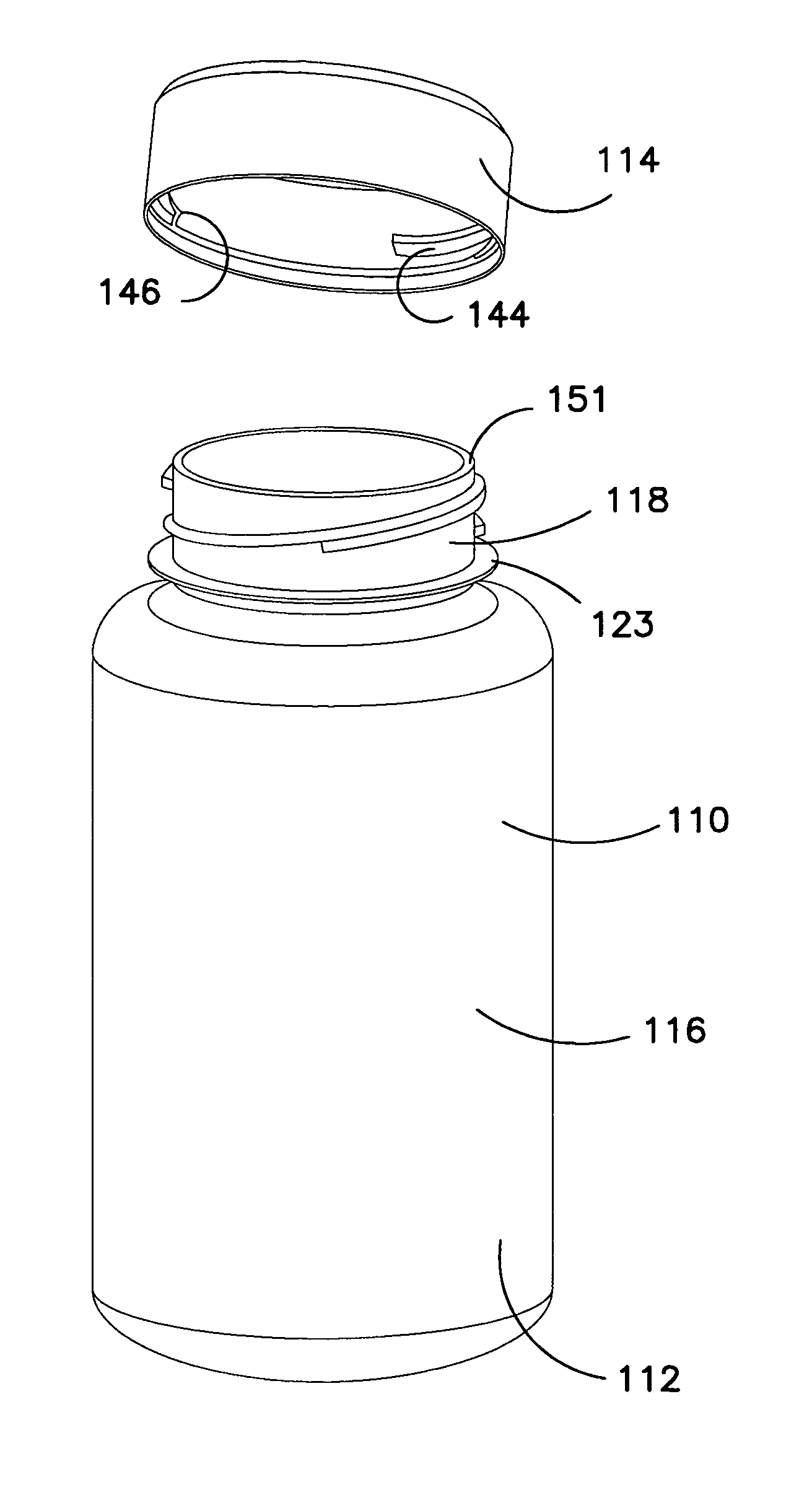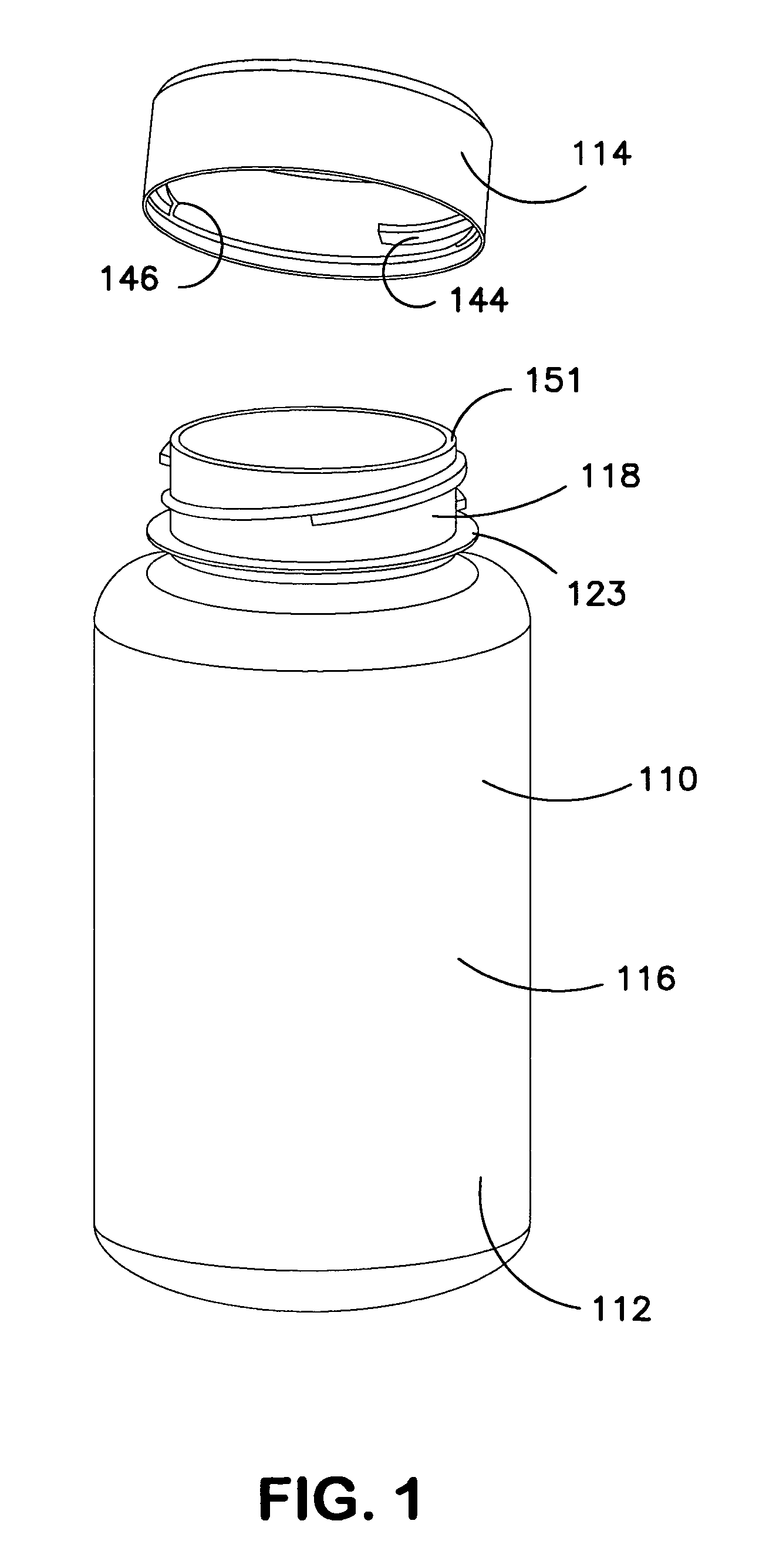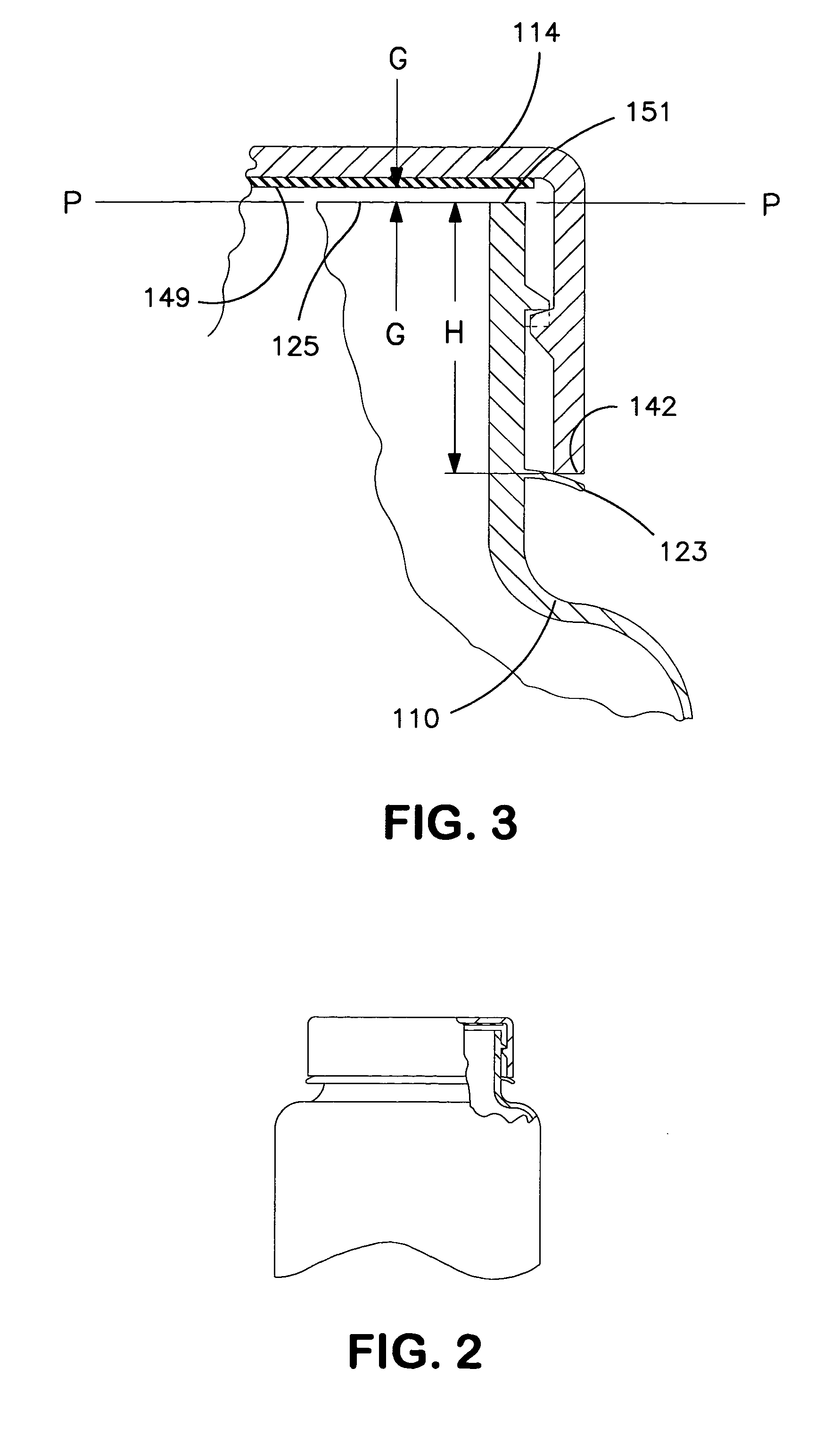Child resistant container-closure assembly
a container and latching technology, applied in the direction of caps, sealing, liquid handling, etc., can solve the problems of unfavorable impact on the child-resistant feature of the assembly, the number of embodiments is rather complicated and expensive to manufacture, and the tensile strength of the assembly tends to lose, so as to achieve economic effect of manufacturing
- Summary
- Abstract
- Description
- Claims
- Application Information
AI Technical Summary
Benefits of technology
Problems solved by technology
Method used
Image
Examples
Embodiment Construction
[0035]Referring now to the drawings and particularly to FIG. 1 thereof, there is shown a first embodiment of child resistant container-closure assembly in accordance with the present invention generally designated by the numeral 110. The assembly comprises a container 112 and cap 114 which may be molded of a suitable plastic material.
[0036]The container 112 has a body portion of generally cylindrical cross section and an upstanding neck portion or bottle finish 118 of smaller diameter. The exterior of the bottle finish 118 has spiral splines, in the present instance, two spline segments 120 and 122. The spline segments 120, 122 extend about half way around the neck of the bottle and each has an enlarged portion 120a, 122a and a cutback portion 120b defining a step configuration and detents 124 and 126 approximately midway of the segments. In accordance with this embodiment of the invention, a circumferentially extending flexible flange 123 extends radially outwardly from the bottle ...
PUM
 Login to View More
Login to View More Abstract
Description
Claims
Application Information
 Login to View More
Login to View More - R&D
- Intellectual Property
- Life Sciences
- Materials
- Tech Scout
- Unparalleled Data Quality
- Higher Quality Content
- 60% Fewer Hallucinations
Browse by: Latest US Patents, China's latest patents, Technical Efficacy Thesaurus, Application Domain, Technology Topic, Popular Technical Reports.
© 2025 PatSnap. All rights reserved.Legal|Privacy policy|Modern Slavery Act Transparency Statement|Sitemap|About US| Contact US: help@patsnap.com



